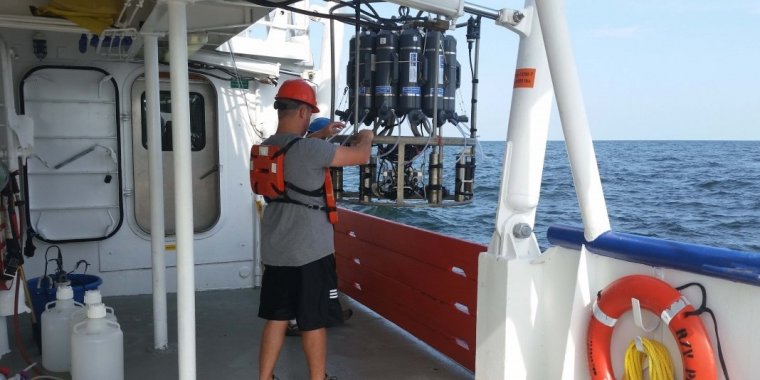| News / Science News |
Gulf of Mexico ‘dead zone’ is the largest ever measured
Scientists have determined this year’s Gulf of Mexico “dead zone,” an area of low oxygen that can kill fish and marine life, is 8,776 square miles, an area about the size of New Jersey. It is the largest measured since dead zone mapping began there in 1985.

Scientists from Louisiana Universities Marine Consortium collected data. ![]()
This large dead zone size shows that nutrient pollution, primarily from agriculture and developed land runoff in the Mississippi River watershed is continuing to affect the nation’s coastal resources and habitats in the Gulf.
These nutrients stimulate massive algal growth that eventually decomposes, which uses up the oxygen needed to support life in the Gulf. This loss of oxygen can cause the loss of fish habitat or force them to move to other areas to survive, decreased reproductive capabilities in fish species and a reduction in the average size of shrimp caught.
A team of scientists led by Louisiana State University and the Louisiana Universities Marine Consortium collected data to determine the size of the dead zone during a survey mission from July 24 to 31 aboard the R/V Pelican.
Previously the largest Gulf of Mexico dead zone was measured in 2002, encompassing 8,497 square miles. The average size of the dead zone over the past five years has been about 5,806 square miles, three times larger than the Gulf Hypoxia Task Force target of 1,900 square miles.
The annual dead zone measurement is used by the Gulf of Mexico/Mississippi River Watershed Nutrient Task Force to determine whether efforts to reduce nutrient pollution in the Mississippi River basin are working.
New initiatives such as the Runoff Risk Advisory Forecast are designed to help farmers apply fertilizer at optimum times to limit nutrient runoff to the Gulf. (NOAA)
YOU MAY ALSO LIKE




